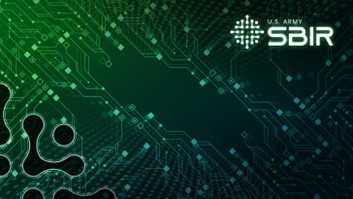

By Anna Volkwine, Office of Army Prize Competitions and Army Applied SBIR Program
The U.S. Army Small Business Innovation Research Program is starting off the new year with seven contract opportunities for small and nontraditional businesses to do business with the Army. The increased number of solicitation releases for February provides a multitude of possibilities for industry to demonstrate how their technologies can solve a range of critical Army challenges. Eligible applicants must submit proposal packages through the Defense SBIR|STTR Innovation Portal.
The February contract opportunities are listed below, with a high-level description of each. For more in-depth information, you can view the individual solicitation pages, which are linked in the topic headings.
The pre-release date for each contract opportunity opened on Feb. 1. The open submission window for each will start Feb. 15 and end March 20.
Large-Scale Mobilization Operations Analysis
The Large-Scale Mobilization Operations Analysis solicitation will support the U.S. Army Reserve in its efforts to mobilize and equip Soldiers quickly to support combatant commanders worldwide in the event of Large-Scale Combat Operations through Large-Scale Mobilization Operations. USAR leadership continues to explore opportunities to bolster the efficiency of existing processes and to enhance mobilization, increasing the overall readiness and support for combatant commanders for LSCO.
Biometrics for Multi-Factor Authentication
The Biometrics for Multi-Factor Authentication solicitation seeks solutions to constraints on the use of biometrics, such as fingerprint and facial recognition, for Soldiers operating in tactical equipment. Solutions should encrypt an authentication token or password that is exposed only when end users meet one of several biometric criteria; support common authentication protocols and standards; and include authentication methods to operate under the following conditions: Denied, Disrupted, Intermittent or Limited.
Forward-Looking Infrared Dual-Band Focal Plane Array in High-Definition Format
The Forward-Looking Infrared Dual-Band Focal Plane Array in High-Definition Format solicitation seeks to develop dual-band Mid-wave Infrared/Long-Wave Infrared and Infrared Focal Plane Array technology that can meet Third Generation Forward Looking Infrared performance objectives, such as clusters, dark current, noise, quantum efficiency, operability, spectral crosstalk, modulation transfer function and non-uniformity correction stability.
Non-RF Transceiver Alternative Communicator
The Non-Radio Frequency Transceiver Alternative Communicator solicitation seeks compact and efficient communication transceivers that can wirelessly transmit between two points, without relying on traditional radio frequency technologies. Through this effort, the Army will prioritize wireless transceivers that can transmit and respond to information in remote or high-activity environments, while removing the need for operator intervention.
Off-the-Visor Heads-Up Display
The Off-the-Visor Heads-Up Display solicitation involves the development of available, daylight-readable off-the-visor display solutions for use in mixed reality head-mounted display systems. This new see-through heads-up display component would enable the use of low-cost visor optics. It would also complete display systems by offering performance compatibility with the Army’s Integrated Visual Augmentation System requirements.
Quantum-Enhanced RF Components
The Quantum-Enhanced RF Components solicitation requests small businesses to develop Radio Frequency components that would enhance the performance of current communication systems. The enhancement of detection of current RF systems would produce lower noise levels for each of the components. Lowering the noise levels for the components will enable the detection of weaker signals, which could mean the radar detection of previously unseen targets.
The User Entity Behavior Analysis solicitation will streamline authentication to the network and services while transparently securing mission-critical services, such as warfighting applications, through granular, role-based access controls. This UEBA solution will be a critical enabler to the Army’s Zero Trust Architecture implementation. It would also improve the tactical network’s cybersecurity posture.
The Army SBIR Program provides Phase I contracts to small and nontraditional businesses whose solutions show technical merit and commercial viability. The program also offers Phase II and Direct to Phase II contracts to firms tackling Army challenges with mature technologies capable of receiving increased federal support.
The program will continue to promote new contract releases via topic announcements and email. We encourage you to follow U.S. Army SBIR|STTR on Facebook, X (formerly Twitter) and LinkedIn for the latest program announcements, updates and solicitation opportunities.
Please contact the Army SBIR mailbox if you have any questions.
